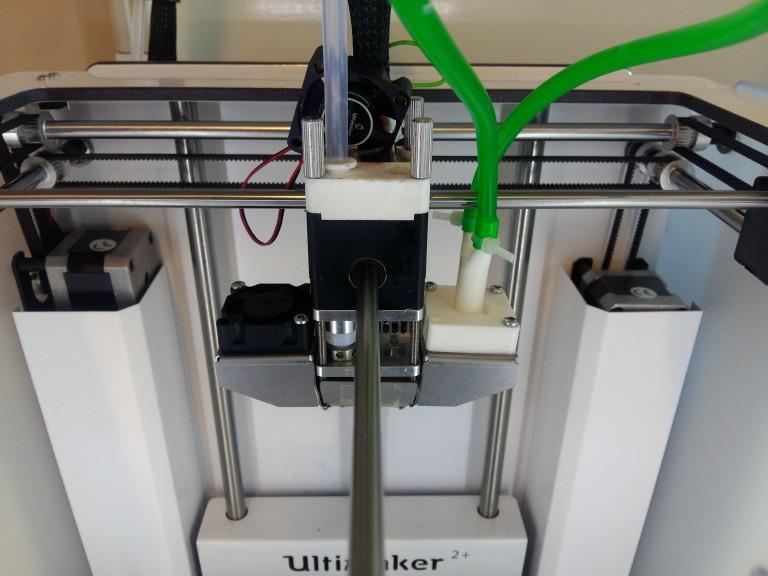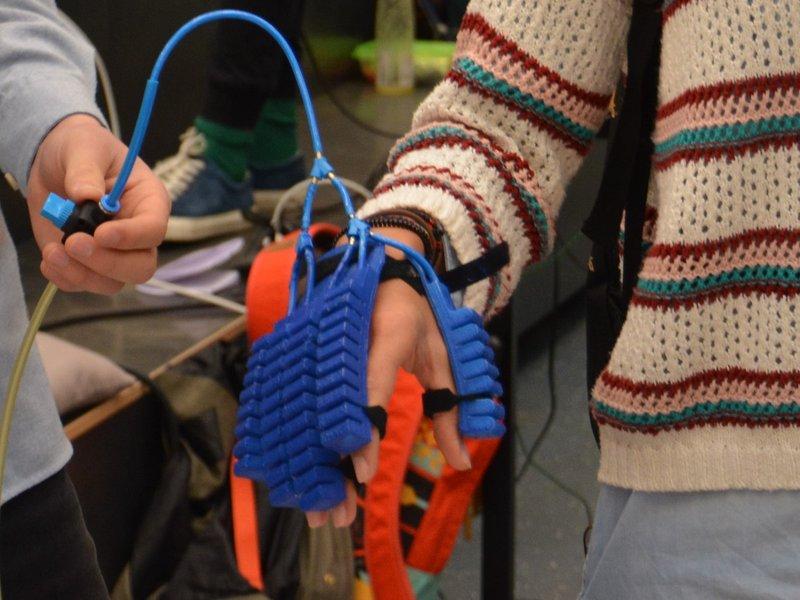 I find soft robotics to be utterly fascinating. While the technology has been around for a while, it’s recently begun to really advance in unprecedented ways – thanks in part to 3D printing. The ability of 3D printing has enabled soft, polymer-based materials to be developed and used in ways that were never possible before, and that’s translated into some amazing advancements for soft robotics – like the world’s first fully autonomous soft-bodied robot, for example.
I find soft robotics to be utterly fascinating. While the technology has been around for a while, it’s recently begun to really advance in unprecedented ways – thanks in part to 3D printing. The ability of 3D printing has enabled soft, polymer-based materials to be developed and used in ways that were never possible before, and that’s translated into some amazing advancements for soft robotics – like the world’s first fully autonomous soft-bodied robot, for example.
Now a team of students at Delft University of Technology (TU Delft) have developed a new method for 3D printing soft robotics – one that not only opens up new applications, but does it cheaply.
The method is called UltiCast, and the team developed it by rebuilding an Ultimaker 3D printer (it seems like a lot of scientists have been doing that lately!) and adding a component that involves two syringes, each filled with a different silicone material.
“It is a combination of moulding and 3D printing,” said Max Nobel, a student in TU Delft’s Industrial Design Engineering program. “The machine makes a plastic shell, which is filled with 2-components silicones at the same time.”
 The shell is made from PVA, or polyvinyl alcohol, a polymer that dissolves in water, leaving a cured silicone object behind. The technique allows for the creation of complex shapes with a kind of surface quality that most standard FDM printers are incapable of achieving. UltiCasting makes it possible to print a soft actuator within a mold, much more quickly – and with more design freedom – than typical casting methods.
The shell is made from PVA, or polyvinyl alcohol, a polymer that dissolves in water, leaving a cured silicone object behind. The technique allows for the creation of complex shapes with a kind of surface quality that most standard FDM printers are incapable of achieving. UltiCasting makes it possible to print a soft actuator within a mold, much more quickly – and with more design freedom – than typical casting methods.
The method can also be used to mix hard and soft materials in one print; for example, one experiment involved the printing of a hard skeleton inside soft silicone. UltiCasting also allows for a precise level of customization.
“You get a lot of freedom to personalise the behaviour of robots with geometry and materials,” said Rob Scharff, a PhD student in soft robotics. “You make sure that the robot behaves exactly as you want to…You can use various materials during printing. The results are much more complex materials.”
Last year, Scharff created a soft robotic hand that responds to human touch and grip as part of a research project. His next goal, he said, was to develop a pair of 3D printed gloves that would help stroke victims learn to grip objects again, and he and the UltiCasting team remain focused on the potential medical applications of their technology. They developed a glove with soft robotic actuators that help the movement of the fingers – a technology that could benefit people with arthritis or other conditions that limit hand function, as well as aid in rehabilitation from injury.
 The 3D printed glove is just a prototype, and the team isn’t looking to create a finished product right now, but to demonstrate the possibilities their technology offers, especially for the medical field.
The 3D printed glove is just a prototype, and the team isn’t looking to create a finished product right now, but to demonstrate the possibilities their technology offers, especially for the medical field.
“3D printing offers a variety of applications, being soft robotics one of them,” said coordinator Jouke Verlinden. “It allows you to make things that are impossible with traditional robotics. Soft robotics is a research theme in which we invest a lot.”
According to Scharff, the system the students developed cost about $3,000 – much less than other multimaterial 3D printing systems, which can cost up to $300,000. The team presented their project at a recent science fair that TU Delft held for its Advanced Prototyping minors. (Go check out some of the other projects presented at the fair – there is some really fascinating work being done with 3D printing at this school!) You can read more about the UltiCast project and the students behind it here. Check out a time-lapse video of the UltiCasting process below:
Discuss in the UtiliCasting forum at 3DPB.com.
[Source: RoboValley / Images: TU Delft UltiCasting team]
Subscribe to Our Email Newsletter
Stay up-to-date on all the latest news from the 3D printing industry and receive information and offers from third party vendors.
You May Also Like
Precision at the Microscale: UK Researchers Advance Medical Devices with BMF’s 3D Printing Tech
University of Nottingham researchers are using Boston Micro Fabrication‘s (BMF) 3D printing technology to develop medical devices that improve compatibility with human tissue. Funded by a UK grant, this project...
3D Printing Webinar and Event Roundup: April 21, 2024
It’s another busy week of webinars and events, starting with Hannover Messe in Germany and continuing with Metalcasting Congress, Chinaplas, TechBlick’s Innovation Festival, and more. Stratasys continues its advanced training...
3D Printing Webinar and Event Roundup: March 17, 2024
It’s another busy week of webinars and events, including SALMED 2024 and AM Forum in Berlin. Stratasys continues its in-person training and is offering two webinars, ASTM is holding a...
3D Printed Micro Antenna is 15% Smaller and 6X Lighter
Horizon Microtechnologies has achieved success in creating a high-frequency D-Band horn antenna through micro 3D printing. However, this achievement did not rely solely on 3D printing; it involved a combination...






























